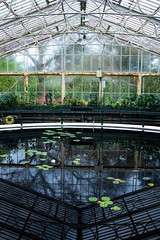I have just visited the Anish Kapoor “Turning the World Upside Down” installation sponsored by Serpintine Gallery in Kensington Gardens.
First of all, I thought I would give you some background on Anish Kapoor:
Born in 1954 in Bombay/Mumbai. His Mother was a Jewish immigrant from Baghdad, while his Father was from a Punjabi family and was a hydrographer in the Indian Navy.
In 1971 he went to Israel to first work on a Kibbutz, and then to study Electrical Engineering. In 1973, he moved to London to study art, first at Hornsey College of Art and then the Chelsea School of Art and Design.
Kapoor’s works are often simple, curved forms that are usually monochromatic and brightly coloured. His art has evolved over the years. His early pieces rely on powder pigment to cover both his work and the floor surrounding them. This is very reminiscent of scenes in markets and temples in India. He soon moved on to using solid stone which have carved apertures and cavities. For his latest work he has produced mirror-like pieces which reflect both the viewer and the surroundings.
So here we are at the “Turning the World Upside down” exhibition.
The day started off so promising, with sunshine, and the odd fluffy cloud in the sky. Perfect for looking at Anish Kapoor’s mirrored work. The first piece (Red Sky Mirror 2009), was situated in the Round Pond at Kensington Gardens:
I’m not too sure if it was because the weather was more favourable at this time, but this was my favourite peice. It was quite odd to look at as well. The red dish is concaved, and you could tell that it was from various different angles, but if you looked at it straight on, it looked more like a flat piece of red glass. I also felt, the red add some more drama to the reflected image.
The next peice (C-Curve 2007) was a play on reflections:
and
As you can see, this played with the viewer. I approached this from the convexed side of the mirrored piece. Which kind of reminded me of somehthing that you would find in the “Hall of Mirrors” at a funfair. However, the concaved side fliped the reflection over. It was quite a strange sight.
By this time, the sunshine had gone, and the clouds got darker, and then the rain started. The last piece I visited was the cone (Non Object (Spire) 2008). I am sure with a better sky, this would have looked amazing:
If you take a closer look, you can see that the cone acutally manages to reflect itself. Although the sky at this time, was totally grey, with very little texture in it, I did like the way the cone reflected the bare branches of the trees that surrounded it.
I am really pleased I went to see these installations, and you have until 13th March 2011, if you would like to see them for yourself.





























